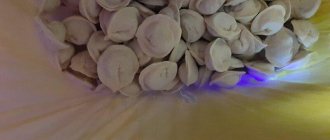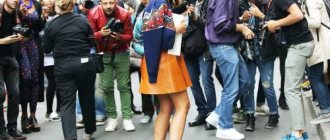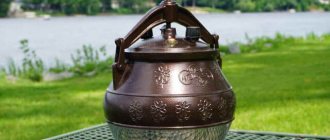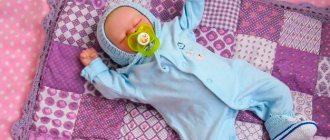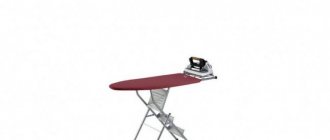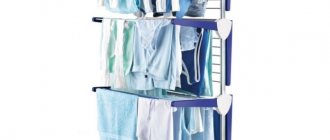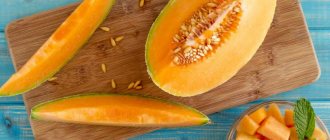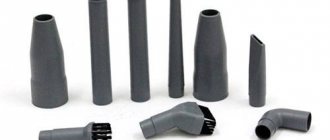Snowboard is a sports equipment, and as in any individual sport, it is selected personally. The first question any beginner has is: how to choose a snowboard for beginners? It all depends on your anthropological indicators and wishes for the amount of adrenaline.
From this review you will learn how to choose the size of snowboard that suits your height, weight, and riding style. The first and main advice: look at the board in the store only after you have ridden in a rental/rental on the snow, gotten some bruises and felt the speed.
How to choose the right snowboard
The first thing you need to understand is why you need this. Looking at the beautiful videos and pictures in the feeds of your friends on social networks, you have a desire to do the same thing, because it’s so cool and simple? But it’s not like riding a bike in the park, although even such trips, if you’re not used to it, make your body ache.
In the first days of getting to know the board on the snow, you may become one of the heroes of the sad attraction of beating different parts of the body when falling in the “paddling pool” (a safe area for children and novice riders). On an uncomfortable board, in uncomfortable boots, in awkward poses and on hard snow. The first trip to learn winter sports does not always bring more pleasure than fatigue and pain.
Don't forget about safety. It depends on the following factors:
- the rider has a helmet on his head;
- knowledge of skiing techniques and rules of safe behavior in different weather conditions and on different types of slopes;
- the correct equipment and equipment that will give the necessary speed and safety on the track.
Mistakes when choosing your first snowboard
Descending from a mountain in the snow has a lot of subtleties, which determine the type of equipment needed. The cost of inventory is quite high, so an error in selection can negatively affect the buyer’s wallet.
The first rule for a beginner: before buying your own board, you need to decide where and when you will ride. For beginners, it would be a good idea to read specialized literature, seek advice from experienced experts, and rent equipment for the first descents. Renting will cost from 3 to 10 times cheaper than buying. If the specific equipment you rent is inconvenient, you can always rent another one. The same cannot be said about a product that has already been purchased.
We continue to carry out the algorithm of actions that determine the correct preparation of a beginner for skating. This is only your own experience, based on renting various equipment or purchasing if you are not afraid to make mistakes in the characteristics and spend extra money.
Choosing snowboarding equipment
Buying and using a board will not bring pleasure if you are wearing the wrong clothes. Even such a seemingly trifle as the lack of a “buff”, in certain conditions, can greatly spoil the pleasant sensations of riding.
Choosing the right equipment is no less an entertaining process than choosing the board itself for descending from snow-capped peaks. Moreover, the range and number of brands allow us to satisfy any demand and taste. A smart solution is to get the optimal combination of quality, beauty and price. For example, snowboarding clothing produced by St. Petersburg.
Take breathable clothing. In this case, after stopping physical activity it will not become cold. Excess moisture will come out through the membrane fabric, and comfort will remain. If you plan to actively ski, and not just relax in the mountains, do not take light-colored equipment, it will blend in with the color of the snow. A speeding rider may not have time to see you and will hit you.
Choosing a snowboard: main criteria
Competent selection can be compared to the selection of a wand in the film about Harry Potter: “Harry, you don’t choose, but she chooses you.” Appearance is not the criterion that you should pay attention to first. The relationship between the rider and his board is in the field of different physical quantities: height, weight, expected speed, maneuverability, level of professionalism, safety, place to ride. It is important to understand why you want to ride and what style of descent suits you.
According to the style of skating, boards are usually divided into 4 types:
- for freeride;
- for freestyle;
- for carving;
- allmountain.
They differ in rigidity in length, width, shape, degree of bending and even boot fastenings. Therefore, before you figure out which snowboard to choose, you need to decide where and how you will ride. Beginners, as a rule, start with the all mountain style, since this is a universal and most popular discipline that allows them to determine the further direction of their skill development.
Regardless of your riding style, you first need to determine your leading foot. This will set the direction of your stance on the board: left (goofy) or right (regular). The leading leg is the one that you put forward when you roll standing, for example, down an ice slide. Or you put it forward when you fall. You can do one experiment to determine, but be careful. Ask a friend to give you a gentle push - putting your leading foot forward to prevent you from falling.
Snowboard length calculation
You can try to calculate for yourself what size snowboard you need, for which there are special formulas:
- for men, snowboard length = 0.3 x rider weight + 136,
- for women, snowboard length = 0.4 x rider weight + 127.
To correct the obtained values, you still need to apply a number of adjustments: large dimensions add 5 cm, fragile physique subtract 5 cm, lack of experience subtract 10 cm.
Example. Girl, height 175 cm, weight 55 kg, no riding experience, average build. Basic calculation 0.4 x 55 + 127 = 149 cm. Taking into account the correction for “inexperience”, the final value is 139 cm.
How to choose a snowboard based on height and weight
It is necessary to decide on its length; maneuverability and stability depend on this indicator: the shorter it is, the easier it is to turn, but the more difficult it is to stand at high speeds. The easiest way to choose the length and size of a snowboard is to look at the table:
Recommended snowboard sizes depending on the height and weight of the rider
If you don’t have a table at hand, the length can be calculated. He will be 15 centimeters shorter than your height. The selected board must be “tried on” by placing it vertically in front of you. If the edge is above the collarbone and below the chin, the size is correct. Add 5 centimeters if you are a massive person and vice versa, if you are lighter than average, shorten the board by 5 cm. If you have never ridden, it is preferable to add another 10 centimeters.
The width should not be less than the outer size of the boots. Otherwise, it will be difficult to avoid tail and nose skidding, and it will be impossible to achieve perfect control of the edges of the snowboard. Everything is simple here, since there are only two categories of width: standard and wide. It makes sense to use the latter only for those with large feet and those who want to ride on powdery snow - freshly fallen soft snow.
Level of training
There are 4 levels of snowboarding training: beginner, intermediate, expert and professional. A true professional can even classify himself as the 4th highest level. Many snowboards are made for a specific skill level, and reading the instructions can answer many questions.
- Beginners are those who have never ridden before and those who ride slowly and unsteadily;
- those who feel confident when descending, who can already use the front and rear edges of a snowboard board (toe edge and heel edge), who have learned to gain speed without the dominance of one leg and who have tried jumping while riding in a snowpark can be classified as average. and other techniques;
- a snowboarder of the “expert” level is absolutely confident in all his movements, performs any figures, instantly adapts to any terrain and never loses control over his body;
- A professional can consider himself someone who has been skating for so long that he feels more confident on the board than on his own feet.
Choose a snowboard according to your current skill level, don't try to jump to the next level too quickly.
How design parameters influence the choice of snowboard
Rigidity depends on the design features. Hard and long ones are taken for high speed on slopes prepared by snowcats. They are used only with hard crepes and boots for freeride or carving. Soft boards are better for freestyle, as they bend more easily when performing tricks.
Typically, a snowboard has a hardness rating on a scale from 1 to 10, and the scales for this indicator vary from manufacturer to manufacturer. Intermediate level is suitable for a beginner.
Another criterion is curvature. This is the profile of the board when viewed from the side. It affects the area of contact with snow, and, accordingly, controllability.
Types of deflections:
- classic (camber);
- reverse (rocker);
- flat
Classic deflection
Relatively good for all styles, but due to versatility it will be an intermediate level skating. The middle, when unloaded, does not reach the surface. When maneuvering, the edges work out their entire length and evenly press on the snow in contact with the slope. This gives predictability to maneuvers.
Reverse deflection
Such a board in profile resembles a rocker arm - it is curved downwards. The raised nose and tail make it easier to perform tricks and facilitate rotations when driving along rails and boxes. Because of the similarity of the profile to a banana, this deflection was nicknamed that way. The raised ends rarely snag on the snow and reduce the likelihood of falling when other models allow you to “grab the edge.”
Flat deflection
There is no deflection here at all, only a curved tail and nose. This design is good for beginners as it is quite safe. There is no air play like camber, which gives full contact. With such a deflection, you shouldn’t rotate – it’s easy to get caught on the surface and fall.
Snowboard shapes
Symmetrical (twin)
Flexible boards with the same design, shape and stiffness of the nose and tail. This symmetry allows you to perform tricks comfortably, since there is the same board under both the right and left legs.
Directional
It has a clearly defined vector of movement due to the difference in shape between the tail and the nose. The nose is softer and wider. This is good for descents on loose and fresh virgin soil.
Directional-twin
The combined design allows you to ride on soft snow, moving the fastenings to one of the ends. If you place the crepes in the center, you get a symmetrical board for riding in parks.
Side cut radius
Another important characteristic of a snowboard is the sidecut radius. This is the radius of an imaginary circle, part of which passes through the edge of the snowboard (everyone remembered their geometry lessons at school). Boards with a small cutout radius are more maneuverable, i.e. allow you to make sharper carved turns, ideal for freestyle. Boards with a large radius allow you to make wide, smooth turns, are more stable at high speeds, and are more suitable for freeride.
Previously, the boards had one side cutout, i.e. the same radius along the entire length, but now manufacturers make boards with several radii, for example:
- progressive two-radius cutout (two identical radii in the heel and toe);
- Progressive multi-radius cutout (two identical radii on the toe and heel, another in the middle).
This is due to the fact that when passing the track or performing this or that trick, the rider constantly transfers weight along the board, to the middle, to the nose or to the heel. Therefore, at the right moment, the desired bend begins to work, which allows you to more accurately enter a turn or more accurately land the board on a trick.
Let's summarize how to choose a snowboard length for beginners
- We identify the need for this sport.
- We determine the financial ability to equip ourselves.
- Buying the right clothes for snowboarding.
- We determine the stance by the leading leg.
- Calculate the appropriate length of the board.
- Decide on your riding style.
- We check the correct choice of style on the rented equipment.
- Once again we check the validity of the style and size.
- We buy a board that suits the anthropometry and is visually pleasing.
- We go to the mountains and try out the purchase in action.
If you have questions about how to choose the right snowboard, boots, bindings and clothing, you can contact the seller in a specific market.
This will allow you to avoid mistakes and purchase the necessary equipment specifically for your data. The characteristics of inventory from different brands may differ in a number of ways. Even a model with the same name released in different years will not be the same. Winter sports are highly influenced by the weather - in the mountains it is changeable and situations in conditions of low ambient temperatures are sometimes unpredictable. In order not to depend on these factors, it is important to take a responsible approach to choosing effective equipment. An excellent assortment of ski and snowboard clothing and accessories for every taste and budget is offered by the Russian company, which has been specializing in the production of sports equipment for 19 years.
Price
The price of a board with boots and bindings will vary from 25,000 to 70,000 rubles, depending on the manufacturer, as well as the materials from which it is made, style and design. The price of your board will depend on your budget and preparation, so it's worth thinking about what you'll be spending before you hit the store.
- on average, boards for beginners cost from 7,000 to 15,000 rubles with boots starting from 7,000 rubles and bindings from 8,000 rubles;
- boards for an intermediate level of training cost on average from 15,000 to 30,000 rubles with boots and bindings costing from 10,000 rubles;
- professional snowboards for a high level of athlete training cost from 30,000 rubles and above with boots and bindings starting from 10,000 rubles;
- You can also buy a used board for a child, with the expectation that it will have to be replaced as they grow. However, it is important to check that the board is of good quality without scratches or damage.
If you're new to snowboarding, it's definitely a good idea to rent a board. This way, you will have time to understand whether you really like this sport, as well as gain experience and choose your riding style.
Some snowboards are sold with bindings, while others are sold without. In this case, the buyer must select and install the fasteners himself. In this case, the store staff will help with selection and installation.
